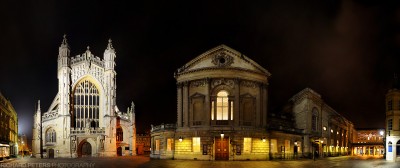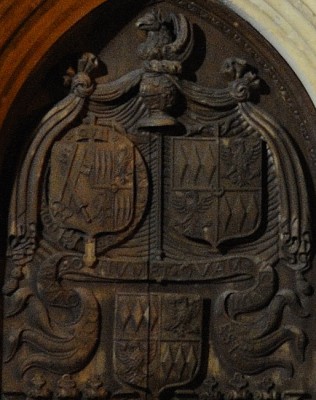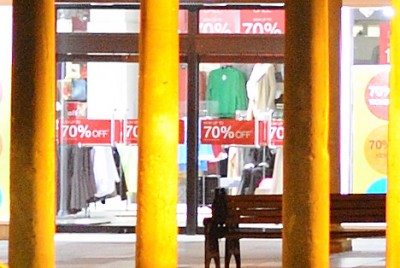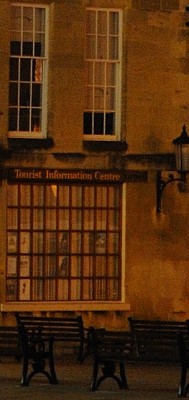What do you do when presented with a huge picturesque scene, it’s night time and you only have a 50mm prime lens and no tripod? Simple, you take 34 individual shots to capture the scene and stitch them together…

Bath, 34 images in 4 rows with 50mm 1.4 AFS
Shot details
Numer of shots: 34 handheld, roughly in 4 rows of 8.
Camera: Nikon D3
Lens: Nikon 50mm 1.4 AFS (read my review)
Settings: 1/30 second, f2.2, ISO 2500
Taking 34 shots and remembering the overlap
I’ve taken plenty of single row panoramic shots in the past. They are pretty straight forward, so thought the challenge of adding multiple rows would be a good one. The technique is quite simple and as you would imagine it – stand on the spot, and slowly turn so that each new frame includes roughly %15-%20 of the previous frame in it. Traditional panoramic’s require a simple line of shots but as I wanted to include the full height of the buildings and only had my 50mm 1.4 AFS I had to take several rows of shots. So once I had gone from left to right along the bottom of the buildings, I then had to point the camera sightly higher and go back the other way, this time having to include overlap not only at the side of the frame but at the bottom as well. I repeated this process 4 times, taking a row of shots then pointing the camera higher and going across again. As you would expect, the final shot has distortion due to the varying angles that the images would capture as perspectives changed so the resulting shot almost has a fish eye element to it when viewed flat on a monitor.
It’s B.I.G.!!
And I don’t just mean the field of view covered by the image, which includes the entrance to the Roman Baths straight ahead, the Bath Cathedral to the left and the high street at the end of the walkway to the right. The image, once stitched was going to be almost 45,000 pixels wide…yes, that’s FORTY FIVE THOUSAND…! I decided to opt for rending the stitch at %70 which came in at a tiny 30,000 pixels. Remember, a single 12mp shot from my D3 is only just over 4,000 pixels wide. Even at the smaller size, once opened in photoshop the final rendered Jpeg was 1.2 gig in size…ouch!
To give you an idea of the resolution here are a couple of %100 crops that have been sharpened a little. The main doorway, with some lovely detail…

Cathedral door detail
And the shops, with sale signs clearly readable on the windows…

Shop front, right of frame
And the tourist information, visible through the gap between the cathedral and the main building in the middle of the shot.

Gap between the buildings
As you can see, the potential with a shot of this resolution for print is very big indeed!
Next time I’ll plan more…
The shot above isn’t perfect, there are things I’d like to change and would do slightly differently next time. However, as this was nothing more than an experiment to see how it would come out I am pleased with the results and can see real potential for some grand views being captured with more planning. By that I mean I’ll make sure I have a tripod with me which will allow lower ISO and slower shutter speeds for much sharper results. Also I’ll work out exactly what I want in frame before I take the shots…as with the shot above, once I had taken most of the shots I decided I wanted it slightly wider, so had to review the images to see the framing for the edge shots then take more to line up and make the scene wider. I’ll also try and do the next shot at a time when there is still some light in the sky, sometime just after sunset maybe. I don’t mind the black of the night sky put think a nice sky would add even more impact for a shot of this scale.
I’m certainly looking forward to trying this out again once I find a suitable location, so watch this space…!








